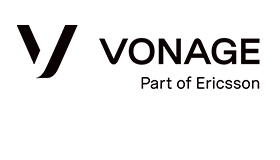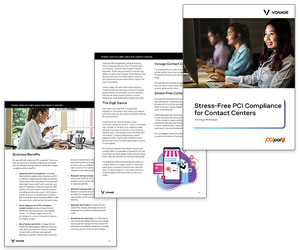Vonage explains how to forward a voicemail on various devices and platforms, helping you easily share messages and improve communication within your organization.
Voicemail messages are a common part of modern business communication, allowing callers to leave a message when you’re unavailable.
However, there are many situations where you may need to forward a voicemail message to a colleague or save it for future reference.
What Is Voicemail Forwarding?
Voicemail forwarding is a feature that allows you to send a voicemail message to another person’s email, phone number, or business voicemail inbox.
Some platforms offer voicemail transcription but the core functionality usually involves sending the audio file itself.
Understanding how to forward a voicemail effectively ensures that important messages reach the right people quickly, enhancing responsiveness and organizational efficiency.
How Voicemail Forwarding Solves Business Communication Challenges
In fast-paced business environments, missed voicemails can quickly lead to delayed responses, unhappy customers, or team misalignment.
Forwarding voicemail messages ensures your team can stay agile and collaborative, even when people are unavailable or working across time zones.
Here’s how voicemail forwarding supports efficient team communication:
Breaks Down Message Silos
Important updates no longer sit in one person’s voicemail inbox. Forwarding voicemails to team inboxes or group emails ensures critical messages reach everyone who needs them.
Reduces Response Time
Voicemails containing urgent tasks or customer complaints can be routed directly to someone who can act immediately.
Supports Operational Workflows
Whether it’s forwarding a client message to a sales rep or routing an escalation to a support lead, voicemail forwarding keeps everyone aligned.
Improves Customer Experience
Responding quickly and accurately to voicemail inquiries leads to higher satisfaction and stronger customer relationships.
Supports Compliance and Record-Keeping
Voicemail-to-email creates a trackable, searchable log of important messages, useful for industries with audit trails or data retention requirements.
By including voicemail forwarding in your communication toolkit, you’re not just making messages easier to share, you’re empowering your team to move faster, collaborate better, and serve customers more effectively.
How to Forward a Voicemail on IPhone
Learning how to forward a voicemail on iPhone is simple and fast.
- Open the Phone app on your iPhone and tap on the “Voicemail” tab.
- Tap the voicemail message you want to forward.
Tap the share icon (a square with an upward arrow) in the upper-right corner. - Choose how you want to forward the voicemail — via Message, Mail, or AirDrop.
- Enter the recipient’s phone number or email address.
- Tap Send to deliver the voicemail message.
This method works with any voicemail stored in your iOS voicemail app and is ideal for forwarding audio messages between devices or contacts.
How to Forward a Voicemail on Android
Wondering how to forward a voicemail on Android? Here’s how to do it using most standard voicemail apps:
- Open the Google Phone app and go to the “Voicemail” tab.
- Tap the voicemail you want to forward.
- Tap the three-dot menu in the top-right corner.
- Select Share from the options.
- Choose an app (e.g., Gmail, Messages, or another installed app) to forward the voicemail.
- Enter the recipient’s email or phone number.
- Tap Send.
Some Android users may need to install their carrier’s visual voicemail app to access these features. This process lets you quickly forward voicemail recordings for collaboration or record-keeping.
This makes it easy to send voicemails to co-workers or save them for future use, enhancing your internal communications and collaboration efforts.
How Do You Forward Voicemails on a Computer?
Forwarding voicemails from a computer is easy with Vonage’s voicemail to email feature. This allows voicemail messages to be sent directly to your inbox as MP3 attachments.
To forward a voicemail from your desktop or laptop:
- Open the email containing the voicemail recording.
- Click Forward in your email client.
- Enter the email addresses of your recipients.
- Optionally, add a message with context or action items.
- Click Send to forward the voicemail.
This process makes it simple to distribute voicemail messages to your team, especially when working remotely, and ensures that everyone stays informed.
Can I Forward Voicemails Automatically?
Yes, with different solutions, you can set up automatic voicemail forwarding using the voicemail-to-email feature mentioned above. Voicemails can be configured to send to:
- A shared group inbox, so all relevant team members receive the message
- A specific team member based on business hours or call routing rules
- Your own email, for quick access to voicemails across devices
This is especially useful for managing voicemails in real time and ensuring important messages don’t get overlooked.
When Should You Forward a Voicemail?
Knowing when to forward a voicemail can help streamline team communication and decision-making. Here are a few key scenarios:
- The message includes an action item or urgent request.
- A colleague has more expertise on the issue and should take over.
- You’re delegating a task based on the voicemail content.
- You need to archive the voicemail for documentation or compliance.
- The voicemail offers valuable feedback or suggestions for your project or department.
Forwarding voicemails efficiently means better teamwork and quicker follow-ups.
Common Mistakes People Make When Forwarding Voicemails
Even though it’s a simple task, forwarding voicemails comes with some common pitfalls. Avoid these to maintain professionalism and privacy.
Not Listening to the Message First
Always listen to or scan the voicemail transcription before forwarding it. With Vonage’s visual voicemail, you can quickly preview the content.
Forgetting About Privacy Regulations
Voicemails may include personal or sensitive data. Ensure the recipient is authorized to hear the message, especially if your business deals with HIPAA, GDPR, or similar regulations.
Providing No Context
Include a brief message explaining why you’re forwarding the voicemail and what action is needed. This helps your team respond faster and more accurately.
Best Practices for Forwarding Voicemails
Use the following tips to make voicemail forwarding more efficient and secure:
- Listen before you send – Avoid passing along incomplete or irrelevant messages.
- Add a note for context – Let the recipient know what action is needed.
- Double-check recipients – Especially important when sending to similar names or aliases.
- Stay compliant – Only share voicemails when it aligns with privacy policies.
- Use group forwarding – Route voicemails to shared inboxes when possible using Vonage’s admin tools.
These best practices help ensure your voicemail workflow stays smooth and secure.
Why Voicemail Forwarding Matters for Team Productivity
Efficient voicemail management isn’t just a convenience, it’s a business advantage. For distributed teams, field staff, or customer-facing departments, voicemail forwarding can be the difference between a missed opportunity and a closed deal.
Here’s how it boosts team performance:
- Centralizes message access — Team members can listen to forwarded voicemails from any device, even if the original call wasn’t directed to them.
- Enables quick task reassignment — If someone’s away or unavailable, a voicemail can be immediately forwarded to another colleague to keep workflows moving.
- Improves message clarity — Adding context to forwarded messages prevents confusion and ensures the recipient understands what needs to happen next.
- Creates accountability — Voicemail-to-email forwarding supports clear handoffs, follow-up tracking, and service-level transparency.
- Supports flexible work styles — Whether your team is remote, hybrid, or mobile-first, voicemail forwarding ensures no message gets missed.
Used together with tools like visual voicemail and shared team inboxes, voicemail forwarding helps streamline operations and free up your team to focus on what matters most, serving your customers.
This blog post has been re-published by kind permission of Vonage – View the Original Article
For more information about Vonage - visit the Vonage Website
Call Centre Helper is not responsible for the content of these guest blog posts. The opinions expressed in this article are those of the author, and do not necessarily reflect those of Call Centre Helper.
Author: Vonage
Reviewed by: Jo Robinson
Published On: 6th Oct 2025
Read more about - Guest Blogs, Vonage






 Vonage is redefining business communications, helping enterprises use fully-integrated unified communications, contact centre and programmable communications solutions via APIs.
Vonage is redefining business communications, helping enterprises use fully-integrated unified communications, contact centre and programmable communications solutions via APIs. 


































